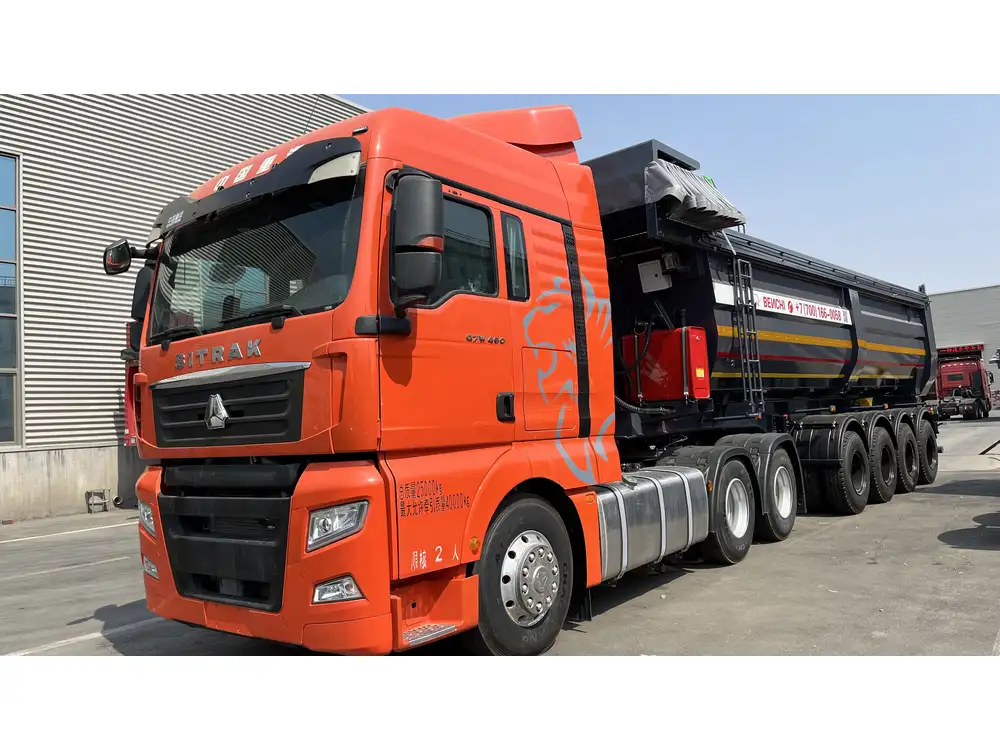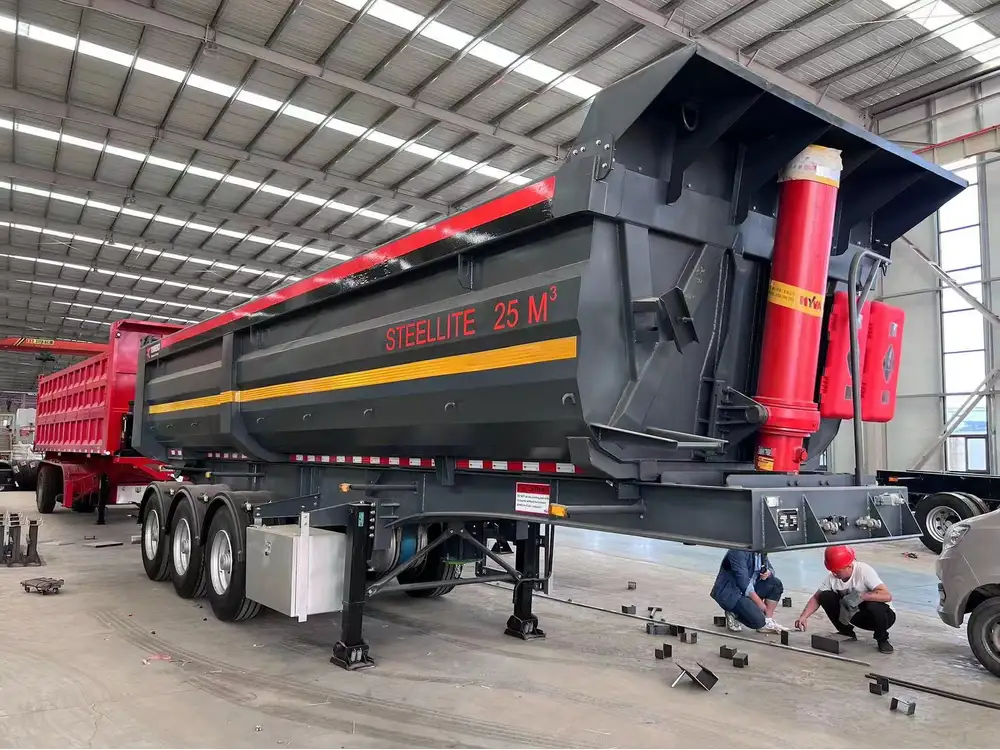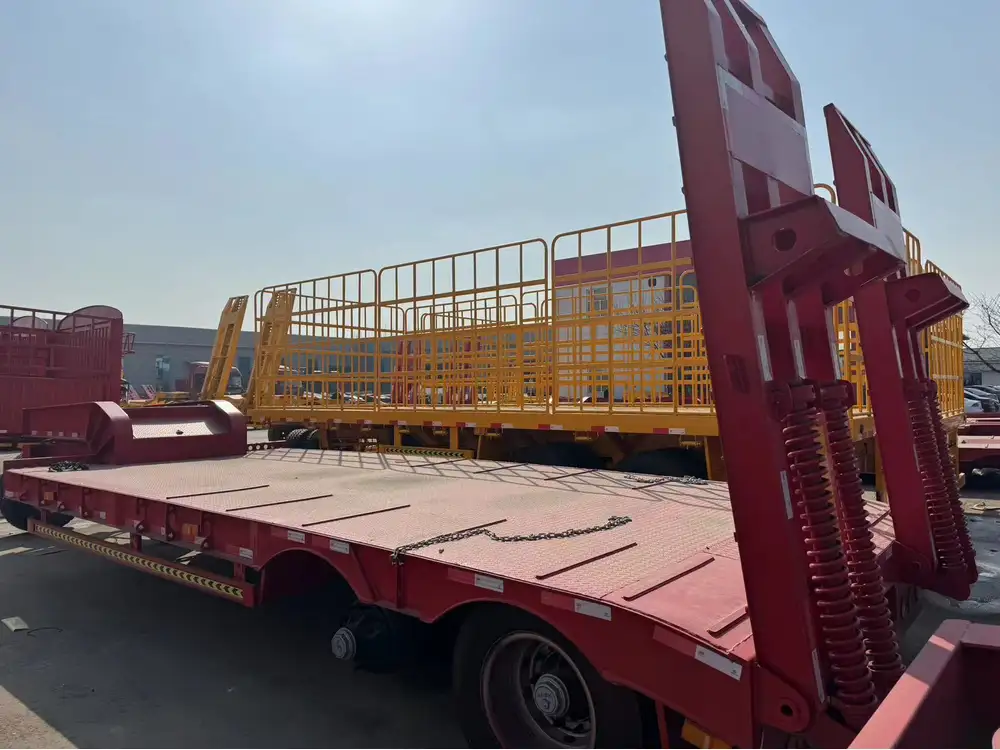The logistics and transportation industry relies heavily on the efficient design and functionality of semi-trailers. Among the various configurations available, the rear slide tandem system has garnered attention for its versatility and performance. This guide delves into the intricacies of how semi-trailer rear slide tandem systems work and the benefits they offer to manufacturers, transport companies, and drivers alike.
Table of Contents
- What is a Rear Slide Tandem System?
- Components of a Rear Slide Tandem System
- 2.1. Slide Mechanism
- 2.2. Tandem Axles
- 2.3. Locking Mechanisms
- Advantages of Rear Slide Tandem Systems
- 3.1. Load Distribution
- 3.2. Enhanced Maneuverability
- 3.3. Improved Weight Management
- Operational Mechanics
- 4.1. Adjusting the Tandem Axles
- 4.2. Safety Features
- Common Applications
- Maintenance Tips for Rear Slide Tandem Systems
- Conclusion
What is a Rear Slide Tandem System?
At its core, a rear slide tandem system is an arrangement of tandem axles positioned toward the rear of a semi-trailer. This configuration allows for the sliding of axles along a predetermined track on the trailer frame, offering flexibility in load distribution and maneuverability. This system contrasts with fixed axles, providing a significant advantage in accommodating varying load weights and navigating tight spaces, making them ideal for urban freight transportation or specialized loads.

Components of a Rear Slide Tandem System
A comprehensive understanding of the rear slide tandem system requires familiarity with its key components, each contributing to the overall functionality and performance of the trailer.
2.1. Slide Mechanism
The slide mechanism is the heart of the rear slide tandem system, enabling the axles to move back and forth. Typically operated by a manual or hydraulic lever, this mechanism ensures that drivers can quickly adjust axle placement based on the requirements of the cargo.
| Slide Mechanism Features | Benefits |
|---|---|
| Manual & hydraulic options | Versatile operation |
| Durable construction | Longevity and reliability |
| Simple design | Easy to maintain |
2.2. Tandem Axles
Tandem axles consist of two axles positioned close together, sharing the load between them. This design is essential for supporting heavier loads while maintaining balance and stability during transport.
| Tandem Axle Characteristics | Significance |
|---|---|
| Load capacity ranging up to 34,000 lbs | Ideal for heavy freight |
| Increased traction and stability | Enhanced safety and performance |

2.3. Locking Mechanisms
Locking mechanisms secure the axles in place after adjustment, ensuring that they do not slide unintentionally during transit. These can be either manual pin locks or automatic locking systems that engage as the axles are positioned.
| Locking Mechanism Types | Advantages |
|---|---|
| Manual pin locks | Cost-effective and reliable |
| Automatic locks | Enhanced convenience |
Advantages of Rear Slide Tandem Systems
The rear slide tandem system provides numerous advantages pertinent to load management and driving ease. Let’s explore some of these benefits further.
3.1. Load Distribution
By allowing drivers to reposition the axles, rear slide tandem systems facilitate optimal load distribution. This aids in achieving compliance with weight regulations and enhances stability. The ability to shift weight balance minimizes the risk of trailer sway, particularly during high-speed travel or sharp turns.

3.2. Enhanced Maneuverability
Urban environments and complex job sites often present challenges for maneuvering large trailers. Rear slide tandem systems improve turning radius and overall maneuverability, making it easier for drivers to navigate tight spaces without compromising safety. This capability is particularly valuable for deliveries in congested urban settings or construction sites.
3.3. Improved Weight Management
Effective weight management is crucial for both operational efficiency and regulatory compliance. By adjusting the position of the tandem axles, operators can distribute weight across the trailer more effectively, potentially avoiding penalties for overweight loads. This flexibility ultimately translates to increased profitability, reduced operational costs, and improved safety records.
Operational Mechanics
Understanding how to operate a rear slide tandem system effectively is critical for maximizing its potential benefits. Below are some essential operational aspects.

4.1. Adjusting the Tandem Axles
To adjust the tandem axles, the operator must:
- Position the Trailer: Ensure the trailer is on a level surface.
- Engage the Slide Mechanism: Utilize the manual or hydraulic lever to unlock the axles.
- Slide the Axles: Move the axles as needed; common positions include forward for lighter loads and backward for heavier loads.
- Lock the Mechanism: Re-engage the locking mechanism to secure the axles in their new position.
4.2. Safety Features
Safety should never be an afterthought. Rear slide tandem systems are equipped with various safety features, including reflective markings, reliable locking mechanisms, and sometimes an electronic monitoring system that alerts drivers to potential issues with axle positioning.
| Safety Features | Importance |
|---|---|
| Reflective markers | Improved visibility |
| Locking mechanism alerts | Prevent accidents |
| Regular maintenance reminders | Ensures system reliability |
Common Applications
The versatility of rear slide tandem systems makes them suitable for a variety of applications across different industries:
- Construction: Ideal for transporting heavy equipment and materials where load redistribution is essential.
- Food & Beverage: Often used for transporting bulk liquids or packaged goods that require careful weight management to maintain stability.
- Refrigerated Transport: Common in the transport of perishables, where the stability and configuration can affect the quality of the products.
- Urban Deliveries: Excellent for navigating tight city streets, ensuring timely deliveries in compact environments.

Industry Insights
| Application Type | Benefits | Challenges |
|---|---|---|
| Construction | Flexibility and load management | Heavy weight in difficult terrains |
| Food & Beverage | Compliance and safety | Temperature control during transit |
| Refrigerated Transport | Stability ensures product quality | Strict regulations on axle loads |
| Urban Deliveries | Enhanced maneuverability | Navigating congested areas |
Maintenance Tips for Rear Slide Tandem Systems
Maintaining a rear slide tandem system ensures ongoing efficiency, safety, and longevity. Here are essential maintenance practices:
Regular Inspections
Conduct routine inspections of the slide mechanism, locking mechanisms, and axles for signs of wear, rust, or damage.

Lubrication
Proper lubrication of moving parts minimizes friction and wear, preventing premature failure of the sliding mechanism.
Brake Check
Ensure the brakes are operating optimally, as uneven load distribution can lead to braking issues. Regular brake checks and adjustments help maintain control.
Weight Compliance
Regularly measure the weight of your load, adjusting the axle positions as needed to ensure compliance with legal weight limits.

Conclusion
The rear slide tandem system stands as a triumvirate of efficiency, flexibility, and safety within the semi-trailer industry. By mastering the mechanics and advantages of this revolutionary design, manufacturers, operators, and drivers can enhance their operational protocols and ultimately increase their bottom line. With proper knowledge and maintenance, the rear slide tandem system becomes not only a tool for transportation but a strategic asset in the logistics landscape.
This comprehensive understanding of how semi-trailer rear slide tandem systems work sets the foundation for successful operations and sustainable practices within the industry. From tailored load distribution to enhanced maneuverability, the potential of this system is vast and valuable. Embrace these insights, ensuring every journey is conducted smoothly, efficiently, and safely—upholding the high standards of modern transportation.



